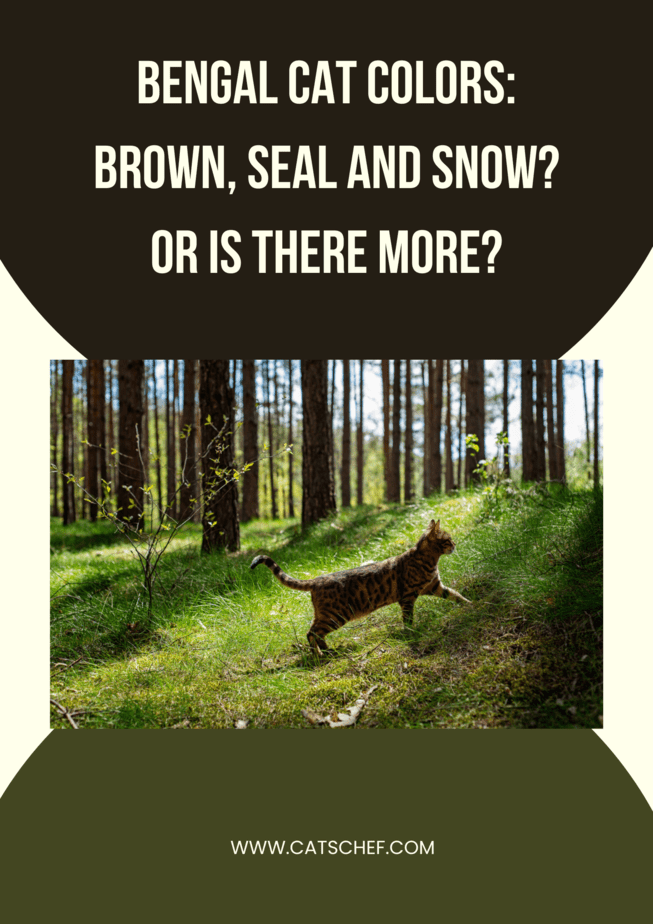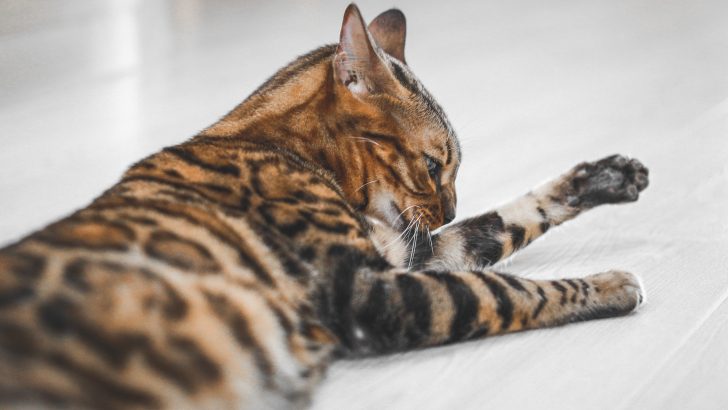When you ask a pet parent what they think about a cat’s color, they’re bound to say something along the lines of “Tabbies are the sweetest” or “Orange cats are the oddest.” Seems as though most people with pets associate color combinations and patterns with purrsonality. What do a Bengal cat’s colors have to do with her temperament, though?
Cats have a reputation for being standoffish and detached. Most haters and naysayers argue how cats do whatever they want, whenever they want to (as though that’s something to be ashamed of).
Because of that, pet parents aplenty overthink getting multicolored cats – they fear they might end up with an aggressive moggie. Now, Bengal cats seem to have amassed an even worse reputation (making you think that there’s something true about multicolored cats acting up).
Truth be told, these Liliputian leopards deserve the hype they get. With long, lean bodies and rosette-patterned markings scattered around, they make for some of the most mysterious-looking creatures.
And, to make things even better, Bengal cats can assume every color of the rainbow (kind of). From brown, silver, and snow to charcoal, blue, and black colors to spotted, marbled, and sparbled patterns, there’s something for everyone.
But, make sure you’re contacting the right breeder to get what you’re looking for. On the other hand, don’t dwell (too much) on what we touched upon at the beginning. While there are studies suggesting how color could have something to do with temperament, that’s not the case with most cats.
Cats, treat you the way you treat them (or the way you teach them to treat you). Color can’t even scratch the surface of what’s necessary to make your cat behave better. Worry not, though. We’re bringing you a rundown on every Bengal cat color under the sun.
But, before we start: What’s there to know about Bengal cats?
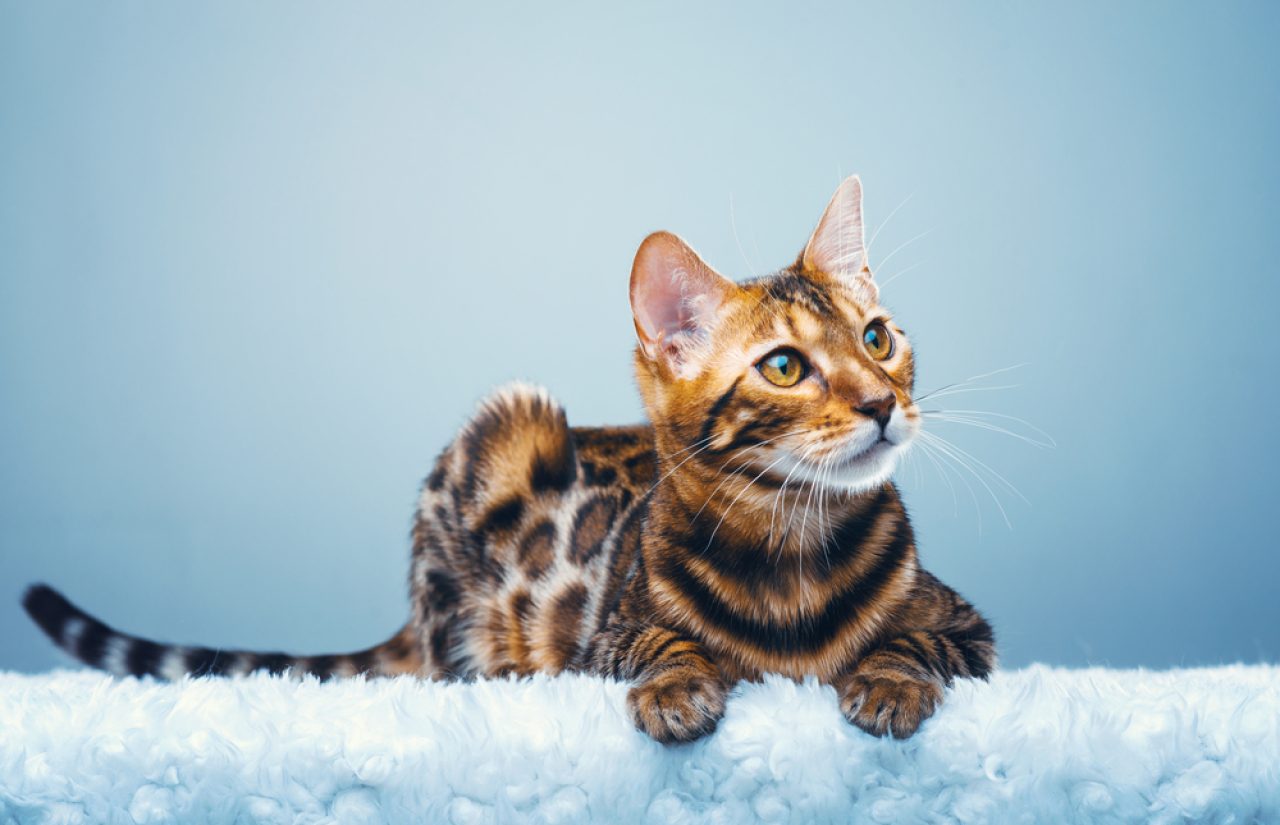
Of course, we can’t talk about a Bengal cat’s colors without talking about where on Earth did the breed come from? Bengal cats are some of the most affectionate, appreciative, and active cats out there.
They love hanging out with humans, running around, and causing trouble. They adore spending time outside and doing things other cats don’t necessarily like doing – such as playing fetch, walking on a leash, etc.
However, that’s not even what Bengal cats are famous for! When you become a parent to one of these creatures of the wilderness, you might catch yourself questioning whether you made a mistake.
Not because they make you regret your decisions, but because they look like they don’t belong on your sofa – they look like they belong outside, playing with leaves, running after the prey.
Where did Bengal cats come from, then? These beautiful beasts appeared around the 1800s as a cross between an Asian leopard cat and a domestic cat. They didn’t get accepted as a breed until the mid-20th century because people feared they were “too wild to be a domesticated cat.”
Considering the rosette patches and forest-like color combinations, that wasn’t a surprise. But, Bengal cats went through a meticulous process of classification. They were classified by how many generations have passed from the original (wild) parent.
For example, an Asian leopard kitten would’ve been an F1. However, an accepted Bengal kitten had to have been at least an F4. And, an F6 would have been considered the perfect level of domesticated.
Turns out that Jean Mill (a breeder and conservationist) managed to achieve that around 1963. The Cat Fanciers’ Association accepted them around 1996. And, Bengal cats went on to become one of the most popular breeds and assume a bunch of charming color combinations and patterns.
All of the Bengal cat colors

Because of the extensive breeding processes, cats can assume a bunch of colors that aren’t necessarily accepted as… Colors. The Cat Fanciers’ Association has very, very strict standards and some colors never get that “green light” or become recognized.
As for Bengals cats, they can have three standard colors that are recognized by most organizations. Brown, silver, and snow are the ones you’re probably going to stumble upon while doing your research.
Sable, lavender, blue, charcoal, black (or melanistic), and even chocolate are some of those “odd” colors you might catch a glimpse of when you end up on the wrong side of the internet. We’re kidding, but those colors aren’t as common for a reason.
On the other hand, Bengal cats can also assume an array of patterns – spotted, marbled, and sparbled being the most prominent (and accepted) ones. Without further ado, we’re bringing you a rundown on some of the colors that might appear on a Bengal cat.
1. Brown
Right off the bat, brown Bengal cats are the most common type that you’re going to come across sooner or later. But, don’t let the numbers fool you – these curious creatures are pretty much the most bewildering Bengals out there (considering that they look like they came straight from the rainforest).
Now, brown Bengals are anything but… Brown. They range anywhere from golden and cream to honey and caramel (and even red and orange). They have a lighter (or creamier) undercoat with dark chestnut or chocolate patches scattered across their long, lean body.
And as for those patches, they can be rosette-patterned or marbled. They can even be tricolor, a dark outline with graduated shades of browns within the circle. They look like leopards, and they’re often referred to as Leopard Bengals because of that.
2. Snow
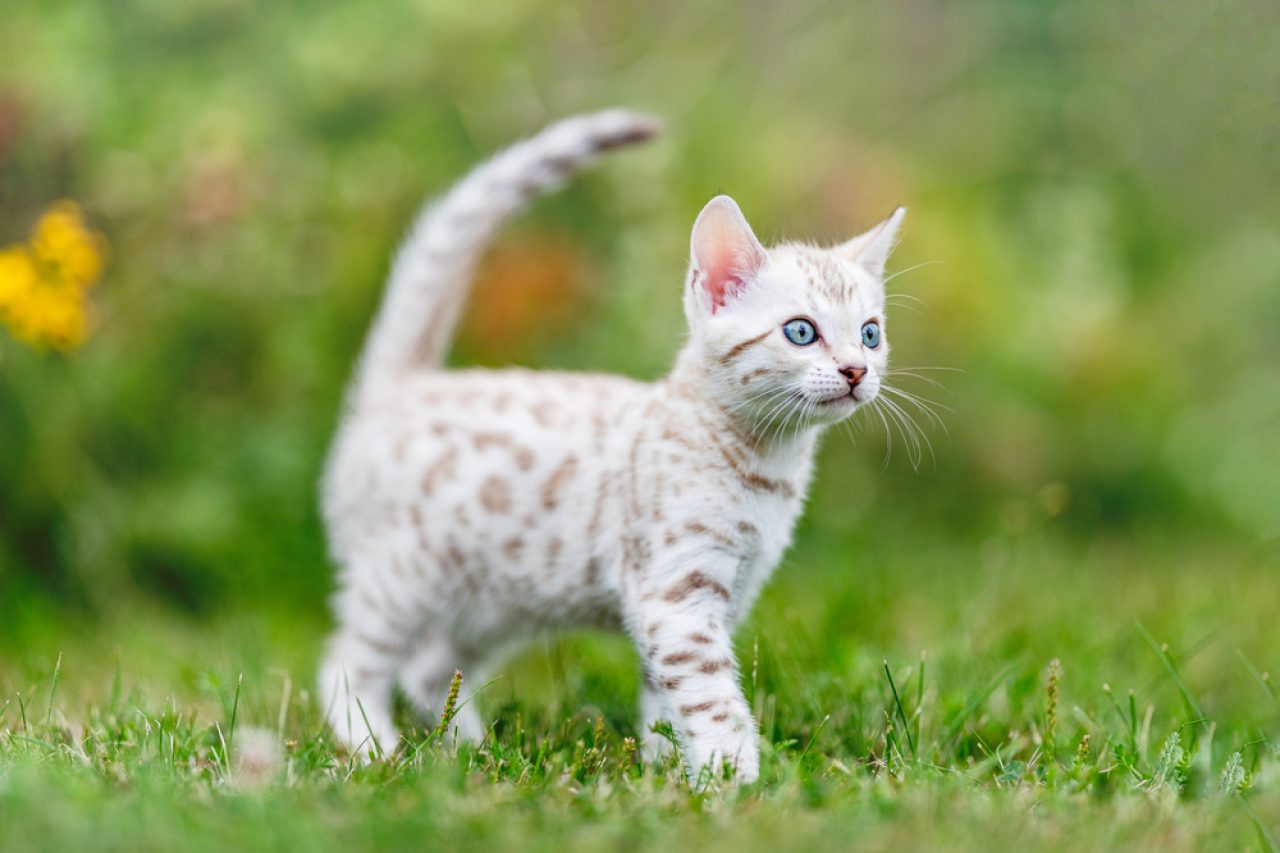
Oh, snow Bengal cats look like small snow leopards that escaped the mountains and came straight to your door. And, to make things even better, snow Bengals can assume three different variations (none of which are actually white).
First things first, we have the seal lynx point Bengals. These bad boys happen to be the lightest out of the snow bunch. They’re often born completely white, but they get brown, grey, or tan spots or marbling as they grow older. They’re the only Bengals with silver-blue eyes which makes them pretty remarkable.
On the other hand, we have the seal mink Bengals. They’re a lot darker than your regular creamy white (snow) cat – they have a light brown or cream base coat and a dark brown or caramel spotted or marbled pattern. They have blue-green eyes and they’re cute as a button.
Last but not least, we have the seal sepia Bengals. They’re the darkest among other snow Bengals and they possess a chocolate brown undercoat with dark brown or tan spotted or marbled markings. They have golden brown eyes and they’re the embodiment of TikTok’s basic fall girls.
3. Black
OK, now we’re getting somewhere with these panther-looking pets! Black Bengals appear as though they’re solid black… But, they’re not. They have a black undercoat with black rosette-patterned or marbled markings that are almost not distinguishable. They’re referred to as “ghost markings” for that very reason.
Now, black Bengal cats are melanistic (which means they’re packing solid colors). While they appear black, you can see the pattern when your cat’s lounging outside (and looking exactly like the black panther).
However, black color combinations aren’t accepted by any of the cat associations (when we’re talking about Bengal cats, at least). Black Bengals cost anywhere between $2,000 and $4,000 because they are so rare.
4. Charcoal
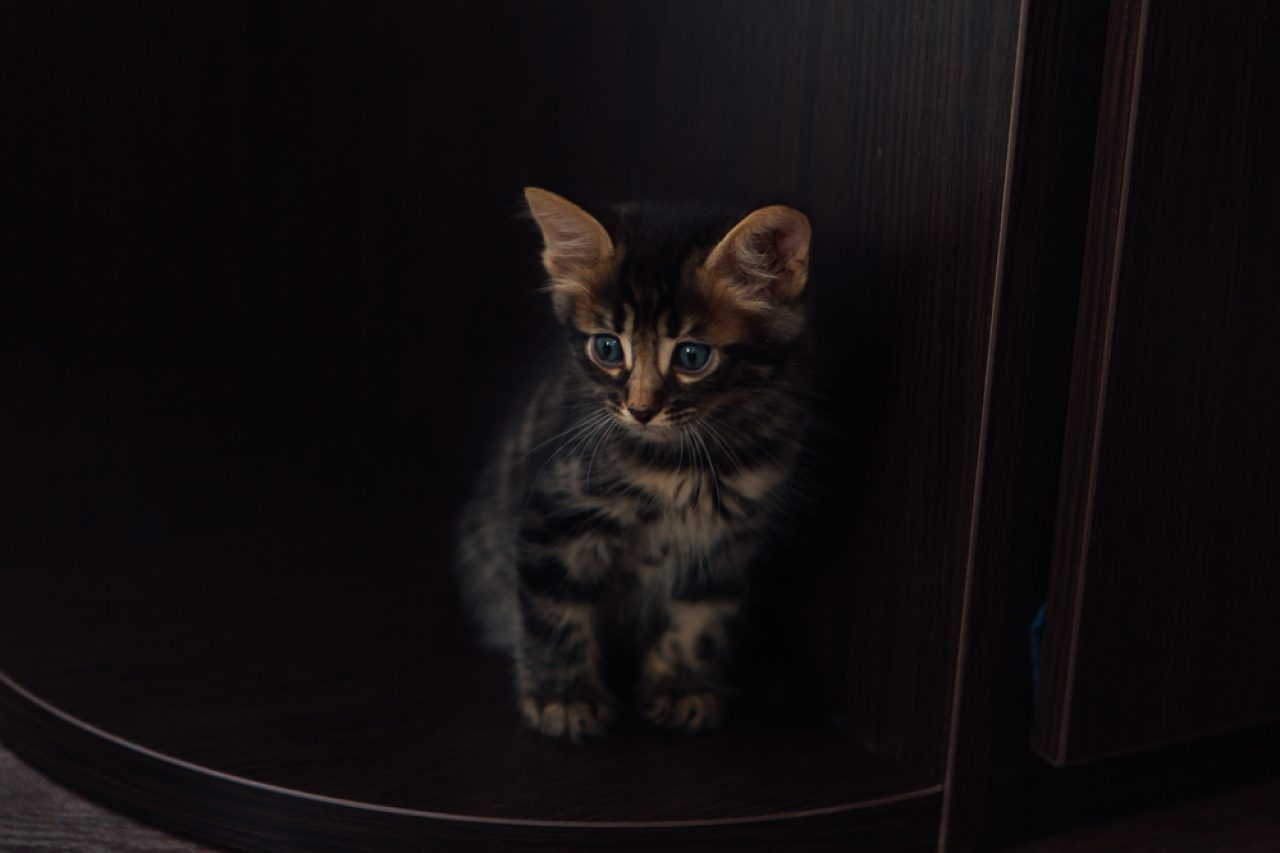
And, charcoal Bengal cats are exceptionally noteworthy given the fact that they aren’t necessarily… Charcoal. As you might have noticed, that’s a running occurrence with Bengal cat color combinations and patterns. They appear to be a particular color, but they’re a different one when you take a closer look.
Therefore, charcoal Bengal cats don’t have charcoal basecoat or charcoal rosette markings. They have an additional layer known as a “ghost layer” that embellishes the standard base coat.
Though that might sound strange, charcoal layers can be present on Bengals regardless of color. Therefore, you can witness a charcoal brown Bengal or a charcoal silver Bengal. And, these Bengals almost always have a dark “face mask” with a dark stripe running down the spine pretending to be a cape.
5. Blue
Going back to the whole “Bengals aren’t the color you think they are” thing, blue Bengals aren’t blue. First and foremost, they look like they have grey undercoats with a blue hue covering the outer layer of the coat.
Other than that, they also appear blue because of the dilute gene that causes the black color to become lighter. Blue Bengal cats are super rare which means you probably can’t find them at your local animal shelter (or even a local breeder).
They have a steel blue or pastel blue base undercoat with dark grey (or black) marbled or spotted patterning. Add golden or green eyes and you have yourself a blue beauty!
6. Silver
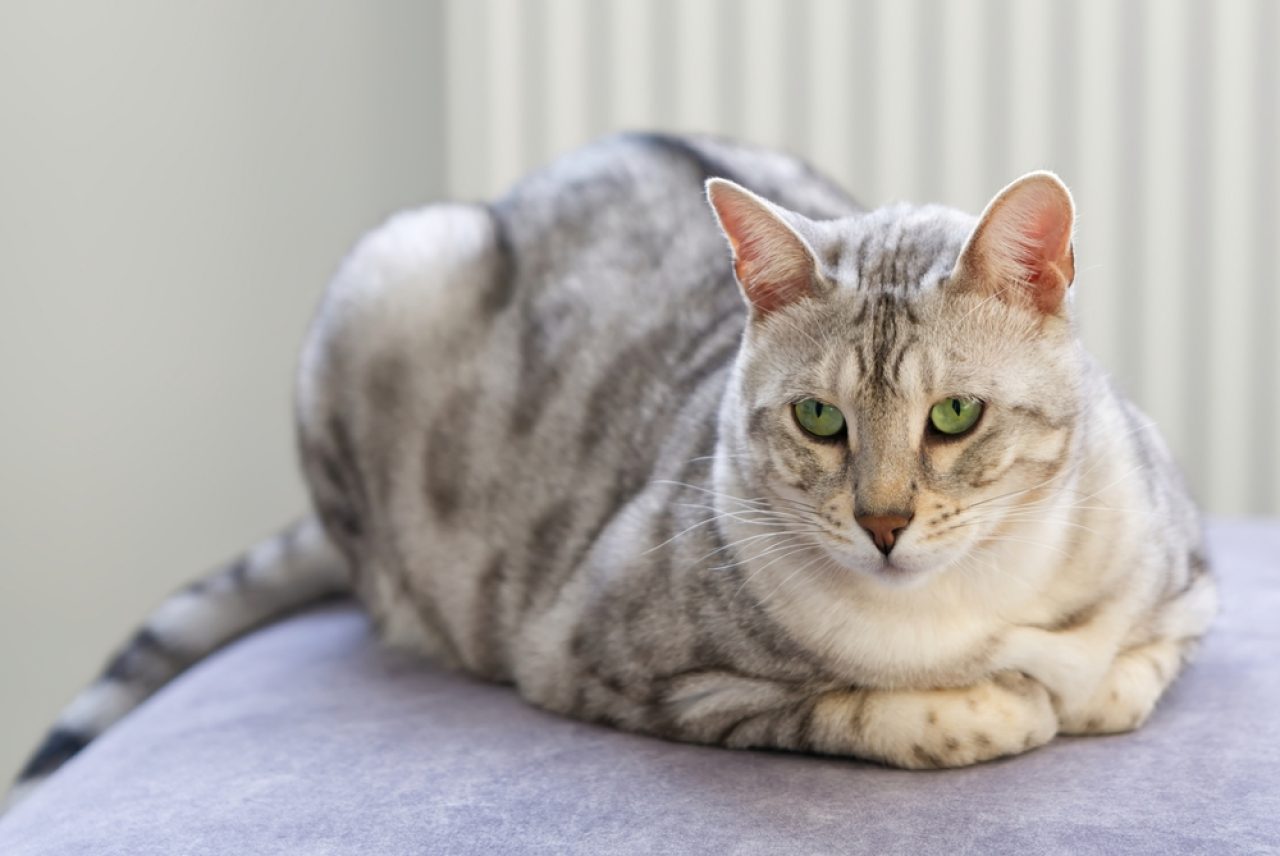
Silver Bengal cats, as you might not have guessed, are surprisingly silver. Judy Sugden, Jean Mill’s daughter, was the one who created them by crossing regular Bengal cats with British Shorthair cats.
Not only that, but she made sure those cats possessed something known as the silver inhibitor gene which appears to be responsible for that silver color.
Silver Bengals can assume different shades. However, more often than not they have a white or light silver undercoat with black and grey spotted or marbled patterns. And, while we’re on the topic of Bengal cat colors, silver Bengals can never have brown, cream, or golden tones (anywhere).
7. Lavender
Nope, we’re not kidding! Lavender Bengal cats are a thing – even though they’re pretty rare because both parents would need to have that dilute gene we mentioned beforehand. While the dilute gene makes the color black turn blue, the same gene makes chocolate become lavender.
How can these two colors even be related, though? Chocolate becomes lavender because the shade we’re talking about looks like something between cream and gray. Lavender Bengal cats have a lavender hue under certain lights. But, they really have cream and gray undercoats with darker spotted or marbled patterns.
8. Spotted
Now we’re getting to patterns – and they are few and far between when compared to colors and color combinations. Bengal cats can be spotted, marbled, and sparbled.
But, we can’t overlook the fact that each of these categories does possess a bunch of varieties that are different from one another. On the off chance that Bengal cats are aggressive because of the color of the coat or the pattern, spotted ones would be the worst out of the bunch.
Spotted Bengal cats are the most common (and recognizable) because they’re the ones that resemble leopards. And, the pattern consists of small to medium-sized dark spots on a lighter background.
Spotted Bengal cats can be single-spotted or possess cluster rosettes, paw-print rosettes, clouded rosettes, doughnut rosettes, and arrowhead rosettes. Each pattern makes the Bengal as scarce as a hen’s tooth and more challenging to detect at the breeder’s.
9. Marbled
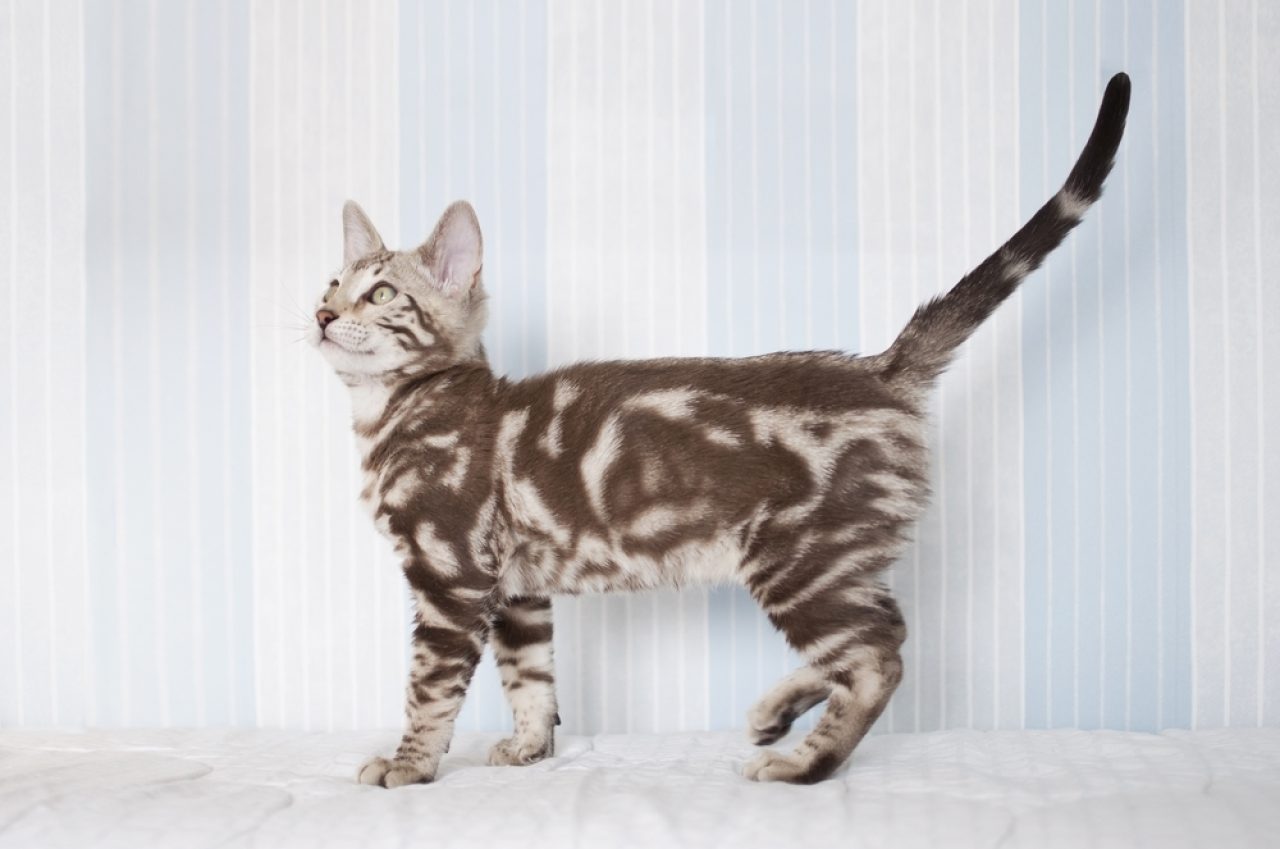
Marbled Bengal cats have a bunch of swirls and stripes placed ever-so-slightly (and randomly) across the back, belly, and the rest of the body. And, the same as the spotted pattern, the marbled pattern can come with different variations depending on the breeder.
Therefore, marbled Bengals can have horizontal flowing markings, reduced horizontal flowing markings, sheeted flowing markings, and a chaos pattern (our favorite!) Each pattern consists of two or more color combinations and makes for some of the most eye-pleasing coat embellishments you’ve ever seen.
10. Sparbled
Sparbled Bengals are as rare as they can get (considering that they haven’t been recognized by any of the cat associations and organizations). But, that didn’t stop them from becoming one of the most unique-looking felines out there – with both spotted and marbled patterns finding a way to coexist.
Not to forget, sparbled Bengals appear even more mysterious when there’s a considerable negative space between the patterns making them seem even more “intentional.” Whichever Bengal cat you end up with, be sure that there’s never a dull moment with these color combinations and patterns.
